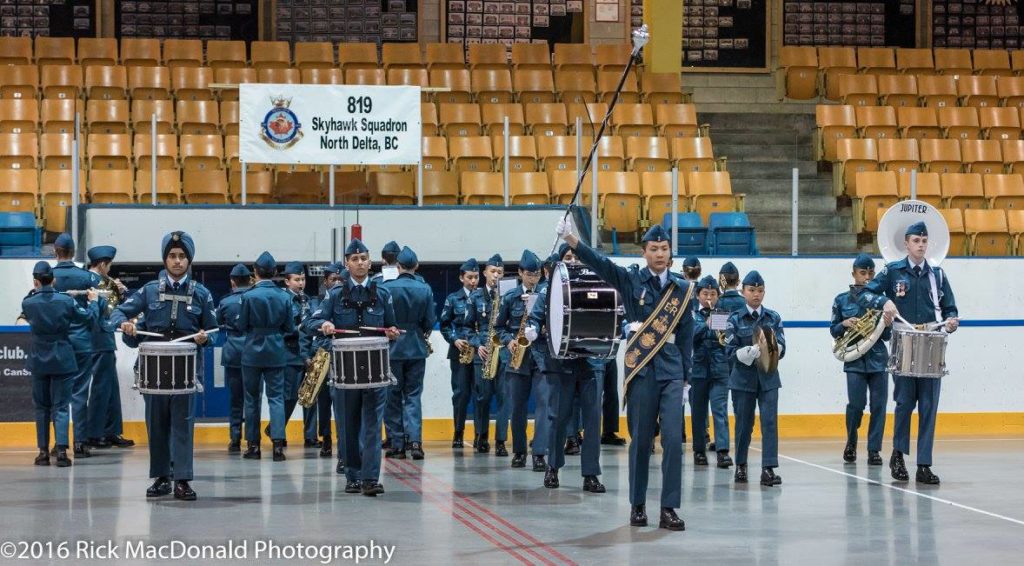Proficiency Training Program
Cadets will progress through a proficiency level for every year that they are enrolled in the program. Subject material learned will differ from level to level to prevent the cadet from learning the same thing more than once. The training levels are as follows:
- Level 1
- Level 2
- Level 3
- Level 4
- Level 5 – On the Job Training
Each level will consist of classroom style theory lectures, practical application, and written examinations. Cadets are required to maintain a standard of knowledge in order to successfully complete a level. In the first level, cadets will learn material contained within the following subjects:
Drill, General Cadet Knowledge, Citizenship, Physical Fitness, Sensible Living, Effective Speaking, Aircraft Identification, Aeronautical facilities, Aircrew Survival, Airframe Structure, Shooting, and many more!
| Training Level | Aims |
| One | The aim of the Proficiency Level One Program is to provide an Air Cadet with the basic theoretical knowledge and practical experience required to participate in cadet squadron activities as a member of a team. |
| Two | The aim of the Proficiency Level Two Program is to provide an air cadet with the basic theoretical knowledge and practical experience required to participate in cadet squadron activities as a flight member. |
| Three | The aim of the Proficiency Level Three Program is to provide an Air Cadet with the basic theoretical knowledge and practical experience required to participate in squadron activities as a team leader. |
| Four | The aim of Proficiency Level Four is to provide an Air Cadet with the theoretical knowledge and practical experience required to participate in squadron activities and appointments as a team leader. |
| Five | The aim of Proficiency Level Five is to provide an Air Cadet with the theoretical knowledge and practical experience required to participate in squadron activities and appointments as an activity leader. |
Below is a list of subjects taught by training level:
| Subject | Level 1 | Level 2 | Level 3 | Level 4 | Level 5 |
| Citizenship | X | X | X | X | X |
| Community Service | X | X | X | X | X |
| Leadership | X | X | X | X | X |
| Personal Fitness and Healthy Living | X | X | X | X | X |
| Recreational Sports | X | X | X | X | |
| Air Rifle Marksmanship | X | X | X | X | |
| General Cadet Knowledge | X | X | X | X | |
| Drill | X | X | X | X | |
| Instructional Techniques | X | X | X | ||
| Biathlon | X | X | X | ||
| Personal Development | X | ||||
| Canadian Forces Familiarization | X | X | X | ||
| Canadian Aviation, Aerospace and Aerodrome Operations Community Familiarization | X | ||||
| Radio Communication | X | X | |||
| Aviation Activities / History | X | X | |||
| Principles of Flight | X | X | X | ||
| Propulsion | X | X | |||
| Meteorology | X | X | |||
| Air Navigation | X | X | |||
| Aerospace | X | X | X | X | X |
| Aerodrome Operations | X | X | X | X | X |
| Aircraft Manufacturing and Maintenance | X | X | X | X | |
| Aircrew Survival | X | X | X | X | X |
Cadet Evaluation
In order to be successful in their level training, cadets must:
- Attend a minimum of 60% of the scheduled training
- Pass any included performance checks
